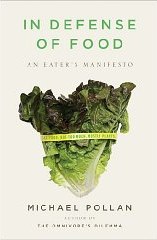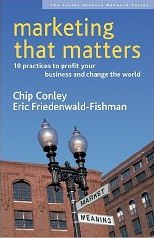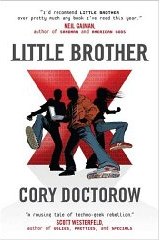The long opening salvo of Pollan’s manifesto argues against nutritionism, the belief that the key to a good diet is simply to eat those compounds that are essential and to avoid those that are toxic. The argument is not completely unsound: for decades, we have been urged to eat some things and to fly from others on the basis of incomplete and contradictory evidence, and there’s good reason to think that there’s something unhealthy about the typical American diet. Pollan is a graceful writer as well, and so this section is written with surprising grace and ease.
But graceful and fluid pseudoscience is still pseudoscience, and at its core this argument retreats all the way back to premodern vitalism: there is some mystical wholeness about, well, whole foods that completes us, and if only we would give our twinkies and eat real food then we would be whole ourselves. Nutritionism is right; in the long run, foods are chemicals — stuff — and someday we’re going to understand what’s in it and what we really should eat.
We could stand to lose some weight, yes, and some of those chemical additives might come back to haunt us. But let’s be real: we’re usually talking about barely-perceptible statistical effects that, for any individual, are likely swamped by many other factors. Yes, that barbecued brisket has some carcinogenic nitrosoamines and saturated fats and cholesterol, and none of these are good for you. But if you’ve got an appointment to keep at midnight in some flaming town, or
When Spring comes round again this year
And the first meadow-flowers appear
then what’s the harm in having a nice sandwich?
The distinction Pollan makes between food and foodlike is handy. Pain perdu, made from brioche baked that morning and dressed with a reduction of fresh berries and cream, is food. Sara Lee is foodlike. Pollan thinks foodlike is Bad; I think it's just a little less trustworthy.
The concluding chapters avoid science and mysticism and launch into speculative prescription, and here Pollan’s insight and good sense win the day. He urges us to
Eat food. Not too much. Mostly plants.
and analyzes the implications of this sensible advice. Important, too, is Pollan’s recognition of how nutritionism has tangled our relationship with food, leading us to look at our food as a mixture of medicines that are Good For Us and toxins that Are Not. The implications of this failure are serious and seldom discussed. When Americans see a picture of chocolate cake, they think of guilt. The French think of celebration. This is the new American tragedy. And when eating is a necessary shame, we do it hastily and joylessly and alone. Eating together, and liking it, is more important that replacing butter with olive oil or buying free-range eggs.
September 20, 2008 (permalink)












